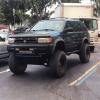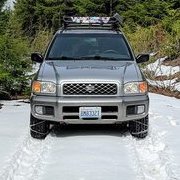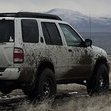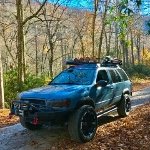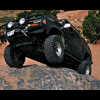Leaderboard
Popular Content
Showing content with the highest reputation on 11/08/2019 in all areas
-
2 points
-
2 points
-
Agreed. With the OME MD springs I used 3 standard compressors 120 degrees apart and still felt sketchy. Would not do again even with the MD which are not as stiff as AC.2 points
-
2 points
-
2 points
-
2 points
-
I look forward to eventually seeing how those projects turn out. I intend to do the former as well & like the concept of the latter. You’re a little short on time to get it delivered at this point but the I would strongly recommend the new style spring compressors- they can be as little as $65 & have consensus support from all that have used them as both effective & safe. I would STRONGLY advocate doing your power valves ASAP. It is only a 2-3 hour job and doesn’t need a rented bay. Pay a shop if necessary. It can DESTROY your engine and make everything else you’ve done pointless & a waste of time & money. I would be prepared to find some screws already missing & needing to be replaced.1 point
-
I hadn't thought of that and I think you're totally right. The boxed key is neutralizing the immobilizer I bet he could just get any 'ol blank cut at the hardware store and it'd probably work!1 point
-
I've done the OME HD front springs with 3-standard rental compressors. Sketchy and slow, but doable in a pinch. I was broken down in the middle of nowhere doing it in a parkinglot though, not ideal. 3/10 do not recommend. Tempting, but it will still be slower than having the shop do it with a press. And I’ll likely never use the compressor again On a different subject, some of my packages came in early so I’m going to try to wire up the camera and water sensor tomorrow so that I don’t have to worry about squeezing everything into one shop day. I’ll post up some pics when it’s done. Honestly, if you plan on working on your vehicle pretty regularly, and have friends who could possibly benefit from using this compressor, I 1000% recommend it. Vs the sketchy rental compressors, these only take minutes to compress an OME HD spring, makes rebuilding the struts incredibly easy. I had a shop do my front struts the first time around and they did it WRONG and it ended up nuking my assembly. I wish I had just done it myself the first time around. You can take your time and make sure everything's done right. It's really not hard and this compressor makes it so much safer.1 point
-
1 point
-
Does their “key in a box” mean that the immobilizer is essentially neutralized & functionally deactivated at all times? If so, you can have as many keys as needed. It’s easy to test. Cut a key for a couple bucks at Home Depot & try it. I have ones for just getting into the truck & occasionally the ignition has been turned on without the chip - it just coughs & dies. You put a key with a chip in & it starts by the 2nd try.1 point
-
Perhaps we can look at this if we get a group up to washington this spring. Especially comparing myself and @02_Pathy.1 point
-
1 point
-
Well, two years later and Cargo Rack v2 exists now. It's not quite done...I jammed on it all last week, late every night (seriously, I hard slept) so that it would be somewhat usable for the CANVAZ 2019 trip over the weekend. From prior posts here, the issue was clearance for the fridge, and there was just no easy way to re-work v1 to make it fit. So, I bought some more steel and got to it. Same considerations as before, but I struggled to find a similar configuration that let me keep my two crates and incorporate the fridge. The floor space in our trucks just simply isn't wide enough, in my opinion. The anchor mount positions are inconveniently and oddly located, too. I spent countless hours redesigning a setup that met my needs, only to realize there was just another issue to resolve. I think I went through about 5-6 designs in total...it was exhaustive, to say the least. ... Rewinding for a moment...I bought a fridge slide several months ago for a long road trip in our new Telluride. Here's how that project turned out, btw... I've been meaning to do a write-up, but basically, I'm using a cheap solar charge controller to regulate the charging on a 35Ah Harbor Freight sealed battery. The fridge runs off the 2nd battery when the car is off, and runs on the car's battery (while the 2nd battery charges) when the car was running. This was good enough to keep the fridge running in the car overnight. However, for part of my trip, we stayed in cities for two nights, and the lack of driving the 2nd day didn't charge the battery enough. Not that we kept perishable foods in there, so it wasn't problematic. ... Anyway, it was already planned to use that the slide and battery setup over to the truck. The fridge slide is a bit oversized for the fridge, so it's one of the reasons I struggled to get suitable dimensions on this redesign. Another issue was the anchoring to the truck. I did not want to take the same approach on v1, where the feet hang off the frame wherever. I was playing with some ideas for a rail for the rack to slide onto, but that also became a little problematic and somewhat of a waste of resources. I opted to make floor mounts that squared up the positions, so that eventually I can make another floor rack that's suited for other purposes (noting that v1 and v2 have been specifically for camping use because they incorporate a slot for a table...not something I really need for any other use). The mounts use simple 2.5"L x 1.5"W x 0.75"H plywood spacers, and then two pieces of 0.250" plate welded together. The spacers are needed to clear the carpet and such. The metal parts allow me to recess the socket bolts and to give me anchor points. I bent them up to help guide the rack in (this is where I wanted a rail of some sort to connect the front and rear mounts), but also to keep the rack from striking the hatch opening. Shown attached... For mounting the rack, I welded in some round steel tube to prevent the square tube from collapsing when bolted down. I then added in a 3/4" plywood base on the lowest level, since this anchored down my tool box. The upper shelves use 1/2". I welded in tabs to support all the shelves, and screws are used underneath to hold them in. I still need to add some expanded steel on the upper hoops behind the head rests, and better/more tie down points for the upper shelves, and complete the shelf area above the fridge space. I apparently don't have a pic of the rack filled up. But it looks like this: The slots left of the fridge are for a crate+lid, and then a dedicated spot for ratchet set. The space in front is where my toolbox is. The 2nd battery mounts to the right of the fridge. Ignore some of the wireframes in there...I used those to mimic the wheelwells and hatch opening. As you can see in the sketch, there will be another tailgate, but that's another issue in itself. Finally, one fundamental change about this design vs. v1 is that the rack slides directly in and out; it doesn't require me to turn it at an angle. That's why I was trying for the rail approach, just to make it easier to move in and out. The width at its widest is 46", and is 34" wide at the top bar. Rack height (excluding mount height) is 30". Max depth is 31" at the main level, and shortens to 24" at the upper shelves to account for the seatbacks, which can recline up to 3 notches.1 point
-
1 point
-
Alright, @RainGoat, this post is just for you, buddy! I was long overdue for some dimensions for you. I still need to put them together for the tailgate and mounting feet, but here you go...now get cracking! There are a few repetitive dimensions and concepts, at minimum from the visual learners like myself, but also to summarize the little aspects of the build. Material sizes are 1" sq. tube for the main framework, 1" x 1-1/2" tube for the back and bottom, and 1/2" sq. tube for the shelf supports. I think everything was 16ga (1/16") wall. Everything was kept to 1/4" increments and simple angles (45° and 22.5° cuts). If I had to do it again, I might use wooden panels for the shelves, like I did for the tailgate, instead of all the 1/2" tube...took too much time to cut pieces and weld together. But then again, it adds various tie-down points. Space conceptualization. There are about 4"-6" available above the tops, and about 3" more on the passenger side, but these values just represent the dimensions up to those of the rack. Top view by levels, and the diagonal dimension that allows it to clear the liftgate opening. Recall that the angles of the 2nd (green) and 3rd (cyan) level shelves are so that it can clear the D-pillars. The height of the rack is also the max allowable, assuming you use 1" mounting spacers like I did (details to follow).1 point
-
you could always experiment with a piece of chalk. Draw a line across the tire, drive for a little bit and see where the chalk wears off first. If it wears off evenly, you have good pressure, If it wears off in the middle first, decrease your pressure, if it wears off on the outsides first, increase your pressure.1 point

